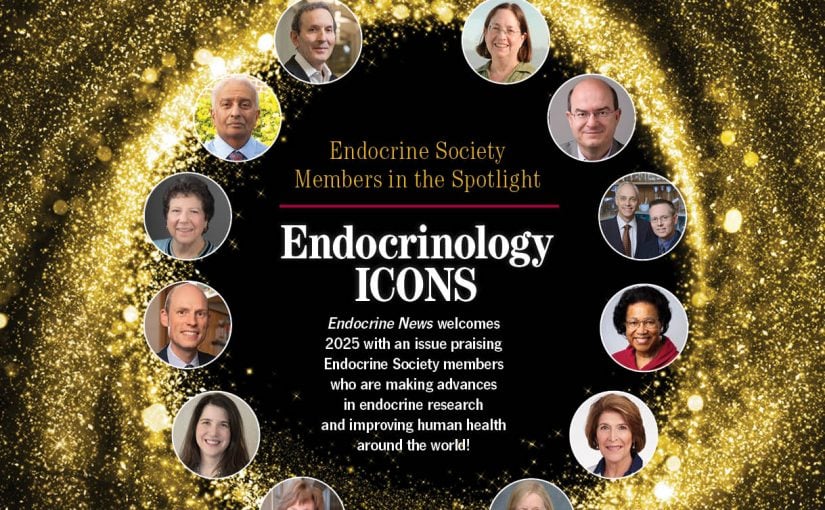Glycogenin-2 Is Dispensable for Liver Glycogen Synthesis and GlucagonStimulated Glucose Release • Henrik U. Irgens, Karianne Fjeld, Bente B. Johansson, Monika Ringdal, Heike Immervoll, Sabine Leh, Oddmund Søvik, Stefan Johansson, Anders Molven, and Pål R. Njølstad • These data indicate that GN2 is not required for liver glycogen synthesis and glucagon-stimulated glucose release.
Hip Axis Length is a FRAX and Bone Density Independent Risk Factor for Hip Fracture in Women • William D. Leslie, Lisa M. Lix, Suzanne N. Morin, Helena Johansson, Anders Odén, Eugene V. McCloskey, and John A. Kanis • DXAderived hip geometry measurements are associated with incident hip fracture risk, but many do not confer signi ficant independent predictive information. HAL was found to predict hip fractures when adjusted for BMD or FRAX score and may be of clinical value in re fining hip fracture risk.
Induction of Painless Thyroiditis in Patients Receiving Programmed Death 1 Receptor Immunotherapy for Metastatic Malignancies • Steven Orlov, Farnaz Salari, Lawrence Kashat, and Paul G. Wal sh • Patients receiving anti-PD-1 mAb therapy should be monitored for signs and symptoms of PTS that may require supportive treatment with beta-blockers or thyroid hormone replacement. The anti-PD-1 mAb is a novel exogenous cause of PTS and provides new insight into the possible perturbations of the immune network that may modulate the development of endogenous PTS, including cases of sporadic and postpartum thyroiditis.
Genome-Wide Analysis of ChREBP Binding Sites on Male Mouse Liver and White Adipose Chromatin • Naravat Poungvarin, Benny Chang, Minako Imamura, Junsheng Chen, Kanya Moolsuwan, Chanachai Sae-Lee, Wei Li, and Lawrence Chan • The authors found that putative ChREBP binding sequences were enriched on promoters of genes involved in insulin signaling pathway, insulin resistance, and tumorigenesis.
Muscle-Specific Deletion of Comparative Gene Identifi cation-58 (CGI-58) Causes Muscle Steatosis but Improves Insulin Sensitivity in Male Mice • Ping Xie, Anil K. G. Kadegowda, Yinyan Ma, Feng Guo, Xianlin Han, Miao Wang, Leanne Groban, Bingzhong Xue, Hang Shi, Huihua Li, and Liqing Yu • Muscle CGI-58 de ciency causes cardiac dysfunction and fat deposition in oxidative muscles but induces a series of favorable metabolic changes in mice fed a high-fat diet.
Molecular Cloning and Characterization of Anti-Müllerian Hormone (AMH) from the Japanese Wrinkled Frog, Rana Rugosa • Maho Kodama, Mari Suda, Daiki Sakamoto, Takehiro Iwasaki, Yasuki Matsuo, Yoshinobu Uno, Yoichi Matsuda, Yoriko Nakamura, Shun Maekawa, Yoshinao Katsu, and Masahisa Nakamura • These results, taken together, suggest that AMH is probably involved in testicular di erentiation in R. rugosa, although an additional, perhaps tissue-speci c, transcription factor may be required for the regulation of AMH transcription.
Contribution of Intronic miR-338–3p and Its Hosting Gene AATK to Compensatory ß-cell Mass Expansion • Cécile Jacovetti, Veronica Jimenez, Eduard Ayuso, Ross Laybutt, Marie-Line Peyot, Marc Prentki, Fatima Bosch, and Romano Regazzi • These results point to a coordinated reduction of miR-338–3p and AATK under insulin resistance conditions and provide evidence for a cooperative action of the microRNA and its hosting gene in compensatory ß-cell mass expansion.
Activation of Melatonin Signaling Promotes Beta Cell Survival and Function • Safia Costes, Marti Boss, Anthony P. omas, and Aleksey V. Matveyenko • The authors’ data suggest that beta cell MT signaling is important for regulation of beta cell survival and function and implies a preventative and therapeutic potential for preservation of beta cell mass and function in T2DM.
The Impact of Diabetes Treatments on Bone Health in Patients with Type 2 Diabetes Mellitus • Matthew P. Gilbert and Richard E. Pratley • In this review, the physiologic mechanisms and clinical impact of diabetes treatments on bone health and fracture risk in patients with T2DM are described.
Molecular Basis of Klotho: From Gene to Function in Aging • Yuechi Xu and Zhongjie Sun • This review focuses on the structure of the KL gene and the factors that regulate KL gene transcription; the key sites in the regulation of α-Klotho enzyme activity; the α-Klotho signaling pathways; and the molecular mechanisms that underlie α-Klotho function. This current understanding of the molecular biology of the α-Klotho protein may o er new insights into its function and role in aging.

